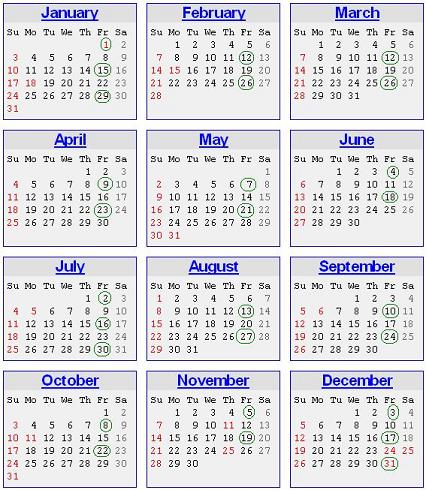Most of the news items about the Big 3 automakers in Washington asking for money refer to it as the “bailout” for Detroit auto companies. It is not a bailout. They are asking for a loan. A bailout is what the financial companies got: billions of dollars with no questions asked, no strings attached, and repayment is optional.
The current Congress worries me a bit. They are looking forward to setting up a new committee or appointee to oversee the running of the car companies. In other words, they are going to use this situation to expand government. They are going to take advantage of the financial crisis to add rules and power to Washington because they wouldn’t be able to get away with it in a normal economy.
The Big 3 car companies want a loan. They are going to repay the loan. They have a pretty good history of repaying the loans from the federal government. And the government has made a decent amount of money on previous loans to the car companies. What happens once these loans are repaid? Is Washington going to disband the new car committee or car czar? Something tells me that this expansion of power will not go away as easily as it came.
<rant>
The senators and representatives seem to be fond of telling the car companies that their business plans are not sustainable and they need Congress to tell them how to run their companies. I would like someone to tell Congress that Medicare and Social Security are not sustainable and they need someone else to tell them how to run the government. Congress wants changes at the top of the car companies. Why don’t we also get changes at the top of Congress, particularly in the finance and banking committees that were supposed to be overseeing Fannie Mae and Freddie Mac? They were warned of their floundering finances, but did nothing to fix it. Why are those the people who are now, all of a sudden, responsible and knowledgeable enough to run car companies?
If the government wants to tell a public company how to run itself, it should follow the existing market methods. If the company is asking the government for money, there are three main options: gift, purchase, or loan.
- If the government wants to just give money away as a gift, then there are no conditions.
- If the government wants to help a company financially but wants a say in the matter, it should buy shares of the company. The more shares you buy, the more votes you get. It works well this way for everyone else.
- The third option is for the government to loan the money to the company. The company pays the government back, and there is no need for the government to force any changes in the company. If the company is being run poorly, then they will have incentive to change things so they can free up some cash to make the loan obligations. If the company can’t make it and goes bankrupt, then I am sure the government would arrange things with the bankruptcy judge so that they are the first to be paid. Even if they don’t get paid, how is this any different from the government’s grand plans to buy bad mortgage debt from the mortgage bankers? Washington was going to buy mortgages that were known to be bad, meaning they expected many of them would not be repaid. The car companies should at least be better than that.
</rant>
There are free-market solutions that the government can use to help the companies. Of course, a truly free market would not have the government get involved. And many people are arguing that government involvement was the root cause of this whole mess, so a truly free market would not have had the same problems that apparently only the government can solve. I vote for less government. Loan the money if you must, but don’t grab for power in the process.
“The rich rules over the poor, And the borrower {becomes} the lender’s slave.”
– Proverbs 22:7
Posted in Finance | 1 Comment »
On my drive home last week, I was listening to a radio show. The host guy was talking about the stock market. He said that the stock market lost 5% the day before, but it gained 5.5% this day, so that’s a net gain of 1/2 a percent. As soon as I heard that, I knew I had to write this post. Some people are percentages illiterate, and perhaps I can help them.
Percentages do not add nicely, if you’re talking about one number going up and down. If he had been talking about points, such as the Dow Jones Industrial Average, he would have been fine. If it is down 500 one day and then up 550 the next, then that’s a net gain of 50 points. But percents do not work that way. Down 5% and then up 5.5% is a net gain of only 2.25%. You need a gain of 5.79% to come out 0.5% ahead after a 5% loss.
Another example: a stock worth $100. If it loses 50% one day, it will be worth $50. If the next day, it gains 50%, then it is only $75, not $100, because you’re taking the percentage of the new, smaller value.
Similarly, if the stock were to gain 50% first, it would be worth $150. Then if it lost 50%, it would be worth $75. You always need a larger percentage gain than a loss in order to come out even because the gain is calculated on the smaller value and the loss is calculated from the larger value.
“Divide your portion to seven, or even to eight, for you do not know what misfortune may occur on the earth.”
– Ecclesiastes 11:2
Posted in Finance | 4 Comments »
The US $700 billion bailout of banks is getting out of hand. GMAC and American Express announced that they are converting themselves into banks in order to better qualify for bailout money. Shortly after that, Treasury Secretary Paulson announced that both Joseph A. Bank and Christopher & Banks have been approved for $3 billion each for their role in the financial sector.
I’m thinking about converting myself into a bank so that I can qualify for a portion of the bailout.
Yes, I’m joking about the clothing stores. But I do think that too much free money is being given away. Where is all this money coming from? How will it affect the economy? It seems that the bailout is a major ingredient for inflation.
“For to everyone who has, more shall be given, and he will have an abundance; but from the one who does not have, even what he does have shall be taken away.”
– Matthew 25:29
Posted in Finance | 1 Comment »
I work for a company that pays on the bi-weekly schedule. This means I get a paycheck every two weeks. This differs from the semi-monthly schedule in that I get 26 paychecks a year instead of 24 (52 weeks / 2 instead of 12 months * 2). The interesting part is that the withholdings are done on some sort of a monthly basis. So two months a year, we get 3 paychecks in that month and the 3rd paycheck is larger than the other 2 in that month because there are no medical or retirement deductions. Taxes are still withheld – there’s no escaping taxes.
The even more interesting part occurs in a year and a half – there will be 27 pay periods in that year. The paychecks are issued every other Friday. In 2010, January 1st is a Friday, and it happens to be the “on” Friday for the company. The year ends with another Friday on December 31st. See this calendar or count how many paydays there are on the calendar below.

In 2016 it will happen again. And 2021 too. And it happened in 2004. I never paid attention to that before. Since each year is 52.17 weeks, and I’m getting paid for only 52 weeks each year, it makes sense to have an extra paycheck every few years. By my calculations, there should be an extra paycheck every 5.6 years.
I would much rather have a semi-monthly paycheck, or even a monthly paycheck. The problem with the bi-weekly paycheck is that no other financial operations work that way (okay, you can setup a bi-weekly mortgage payment, but that’s not standard). My mortgage is due on the first day of every month. My car payments are due on certain days of the month. Sometimes I get a paycheck on the first, sometimes it is on the third. If it’s on the third, then I have to make sure my bills from the end of the previous month get delayed. The bi-weekly paycheck system requires more planning on the part of the employee to manage bill paying (or less planning with a larger balance or buffer in the checking account).
If you are involved in payroll somehow and have to decide which system to use, don’t go with bi-weekly.
“You shall give him his wages on his day before the sun sets, for he is poor and sets his heart on it; so that he will not cry against you to the LORD and it become sin in you.”
– Deuteronomy 24:15
Posted in Finance | 8 Comments »
And the winner is…OVR. That’s right, Oversold with Improving RSI, combined with Overbought with Declining RSI, put on a very strong last leg to finish well ahead of the other contenders.
What does that mean? What is my conclusion? I think I’ll use OVR as one of the inputs of my stock-buying decisions. It might make a fine stock screener to provide a list of potential stocks. An 19% return in one month is impressive, but all that means is that it warrants a closer look.
On a related note, don’t use CCI Signals and Parabolic SAR Signals as stock screeners. Those were returning 200, 300, and even 599 stocks for one day. A stock screener that returns 599 stocks is not very useful to me, so I removed those from the list at the beginning of this month-long test. I want a stock screener that returns a few dozen stocks, at most.
NASDAQ
|
NASDAQ |
| Index |
Time |
MA |
MACD |
OVR |
BOL |
CHK |
Aroon |
ADX |
| -1.17 |
1 Day |
-1.87 |
-2.63 |
1.20 |
1.42 |
0.41 |
1.91 |
1.00 |
| -1.04 |
2 Days |
-2.68 |
-0.36 |
2.45 |
1.86 |
-0.89 |
1.11 |
1.49 |
| -1.49 |
3 Days |
-2.50 |
-0.77 |
2.78 |
-3.78 |
-5.23 |
-3.91 |
-4.40 |
| 1.39 |
1 Week |
-1.28 |
0.67 |
2.16 |
-2.77 |
-4.64 |
-1.18 |
-1.49 |
| 1.12 |
2 Weeks |
2.39 |
-1.49 |
2.70 |
-3.32 |
-2.46 |
-3.20 |
-4.58 |
| 2.08 |
3 Weeks |
3.98 |
-2.07 |
-3.45 |
-3.41 |
-0.66 |
-1.76 |
-7.65 |
| 8.97 |
4 Weeks |
4.98 |
-3.61 |
14.80 |
-4.93 |
-4.96 |
-0.52 |
-11.46 |
NYSE
|
NYSE |
| Index |
Time |
MA |
MACD |
OVR |
BOL |
CHK |
Aroon |
ADX |
| -0.71 |
1 Day |
1.28 |
0.33 |
-1.82 |
2.00 |
3.22 |
1.20 |
2.43 |
| -2.27 |
2 Days |
1.98 |
-0.33 |
-1.66 |
1.65 |
-0.44 |
0.82 |
0.30 |
| -0.17 |
3 Days |
-1.50 |
-0.48 |
1.16 |
-2.24 |
-3.66 |
-2.42 |
-2.52 |
| 1.83 |
1 Week |
-4.64 |
0.54 |
3.61 |
-3.30 |
-4.68 |
-2.87 |
-3.57 |
| -1.04 |
2 Weeks |
-6.09 |
-1.55 |
3.44 |
2.88 |
-3.75 |
-1.52 |
-0.91 |
| -0.94 |
3 Weeks |
-5.98 |
-0.47 |
4.98 |
0.69 |
-6.40 |
-1.70 |
0.51 |
| 1.75 |
4 Weeks |
-5.04 |
1.64 |
19.86 |
1.26 |
-9.96 |
-5.42 |
-2.85 |
This is not an offer to buy or sell any securities. Any information on this site is general in nature and is not intended to be financial advice for your specific situation. Trading stocks carries risks that should be discussed with a professional financial advisor. Past performance is no guarantee of future results. Use at your own risk. This post was written in a facility that processes peanuts.
Do you not know that those who run in a race all run, but only one receives the prize? Run in such a way that you may win.
– 1 Corinthians 9:24
Posted in Finance | No Comments »
This week, I am posting the results of the third week of tracking certain indicators. This week shows how those indicators have fared two weeks after the last changes to the portfolio.
It had looked like the Oversold with Improving RSI would be the winner, but this week it took a downturn. And the Moving Average Crossover 50/200 jumped into the lead. That’s for the NASDAQ. For the NYSE, Oversold with Improving RSI widens its lead over Bollinger Bands, which had been running strong until now. I think it has hit the point where the indicators are not performing as well as they should, because portfolio is not being kept current with the buy and sell signals. I think I’ll run one more week of this.
NASDAQ
|
NASDAQ |
| Index |
Time |
MA |
MACD |
OVR |
BOL |
CHK |
Aroon |
ADX |
| -1.17 |
1 Day |
-1.87 |
-2.63 |
1.20 |
1.42 |
0.41 |
1.91 |
1.00 |
| -1.04 |
2 Days |
-2.68 |
-0.36 |
2.45 |
1.86 |
-0.89 |
1.11 |
1.49 |
| -1.49 |
3 Days |
-2.50 |
-0.77 |
2.78 |
-3.78 |
-5.23 |
-3.91 |
-4.40 |
| 1.39 |
1 Week |
-1.28 |
0.67 |
2.16 |
-2.77 |
-4.64 |
-1.18 |
-1.49 |
| 1.12 |
2 Weeks |
2.39 |
-1.49 |
2.70 |
-3.32 |
-2.46 |
-3.20 |
-4.58 |
| 2.08 |
3 Weeks |
3.98 |
-2.07 |
-3.45 |
-3.41 |
-0.66 |
-1.76 |
-7.65 |
NYSE
|
NYSE |
| Index |
Time |
MA |
MACD |
OVR |
BOL |
CHK |
Aroon |
ADX |
| -0.71 |
1 Day |
1.28 |
0.33 |
-1.82 |
2.00 |
3.22 |
1.20 |
2.43 |
| -2.27 |
2 Days |
1.98 |
-0.33 |
-1.66 |
1.65 |
-0.44 |
0.82 |
0.30 |
| -0.17 |
3 Days |
-1.50 |
-0.48 |
1.16 |
-2.24 |
-3.66 |
-2.42 |
-2.52 |
| 1.83 |
1 Week |
-4.64 |
0.54 |
3.61 |
-3.30 |
-4.68 |
-2.87 |
-3.57 |
| -1.04 |
2 Weeks |
-6.09 |
-1.55 |
3.44 |
2.88 |
-3.75 |
-1.52 |
-0.91 |
| -0.94 |
3 Weeks |
-5.98 |
-0.47 |
4.98 |
0.69 |
-6.40 |
-1.70 |
0.51 |
“One hand full of rest is better than two fists full of labor and striving after wind.”
– Ecclesiastes 4:6
Posted in Finance | No Comments »
Last week, I posted the results of a week of gathering stock picks from a technical analysis site. This week, I am posting the results of the second week of that effort. This week shows how those stocks have fared a week later, without any changes to the portfolio.
Also, I corrected the earlier numbers. The values for 2 Days, 3 Days, and 1 Week were added instead of averaged, so the returns were greater than they should have been (e.g. 5 stocks returning 5% each does not mean you will get a 25% return). That error does not affect the results in that the point of the exercise is to compare analysis methods. As long as the methods were compared using the same calculations, the comparison will be valid. But the error would affect the secondary part of the exercise, which is to see how the analysis methods perform against the market itself.
So here are the this week’s results:
NASDAQ
|
NASDAQ |
| Index |
Time |
MA |
MACD |
OVR |
BOL |
CHK |
Aroon |
ADX |
| -1.17 |
1 Day |
-1.87 |
-2.63 |
1.20 |
1.42 |
0.41 |
1.91 |
1.00 |
| -1.04 |
2 Days |
-2.68 |
-0.36 |
2.45 |
1.86 |
-0.89 |
1.11 |
1.49 |
| -1.49 |
3 Days |
-2.50 |
-0.77 |
2.78 |
-3.78 |
-5.23 |
-3.91 |
-4.40 |
| 1.39 |
1 Week |
-1.28 |
0.67 |
2.16 |
-2.77 |
-4.64 |
-1.18 |
-1.49 |
| 1.12 |
2 Weeks |
2.39 |
-1.49 |
2.70 |
-3.32 |
-2.46 |
-3.20 |
-4.58 |
NYSE
|
NYSE |
| Index |
Time |
MA |
MACD |
OVR |
BOL |
CHK |
Aroon |
ADX |
| -0.71 |
1 Day |
1.28 |
0.33 |
-1.82 |
2.00 |
3.22 |
1.20 |
2.43 |
| -2.27 |
2 Days |
1.98 |
-0.33 |
-1.66 |
1.65 |
-0.44 |
0.82 |
0.30 |
| -0.17 |
3 Days |
-1.50 |
-0.48 |
1.16 |
-2.24 |
-3.66 |
-2.42 |
-2.52 |
| 1.83 |
1 Week |
-4.64 |
0.54 |
3.61 |
-3.30 |
-4.68 |
-2.87 |
-3.57 |
| -1.04 |
2 Weeks |
-6.09 |
-1.55 |
3.44 |
2.88 |
-3.75 |
-1.52 |
-0.91 |
This is not an offer to buy or sell any securities. Any information on this site is general in nature and is not intended to be financial advice for your specific situation. Trading stocks carries risks that should be discussed with a professional financial advisor. Past performance is no guarantee of future results. Use at your own risk. This post was written in a facility that processes peanuts.
“He who increases his wealth by interest and usury Gathers it for him who is gracious to the poor.”
– Proverbs 28:8
Posted in Finance | No Comments »

 This is Alpha, the first-born, when he was 2YO.
This is Alpha, the first-born, when he was 2YO. This is Beta, the second-born, when he was about 2YO.
This is Beta, the second-born, when he was about 2YO. This is Gamma, the third-born, when he was about 18MO.
This is Gamma, the third-born, when he was about 18MO.


